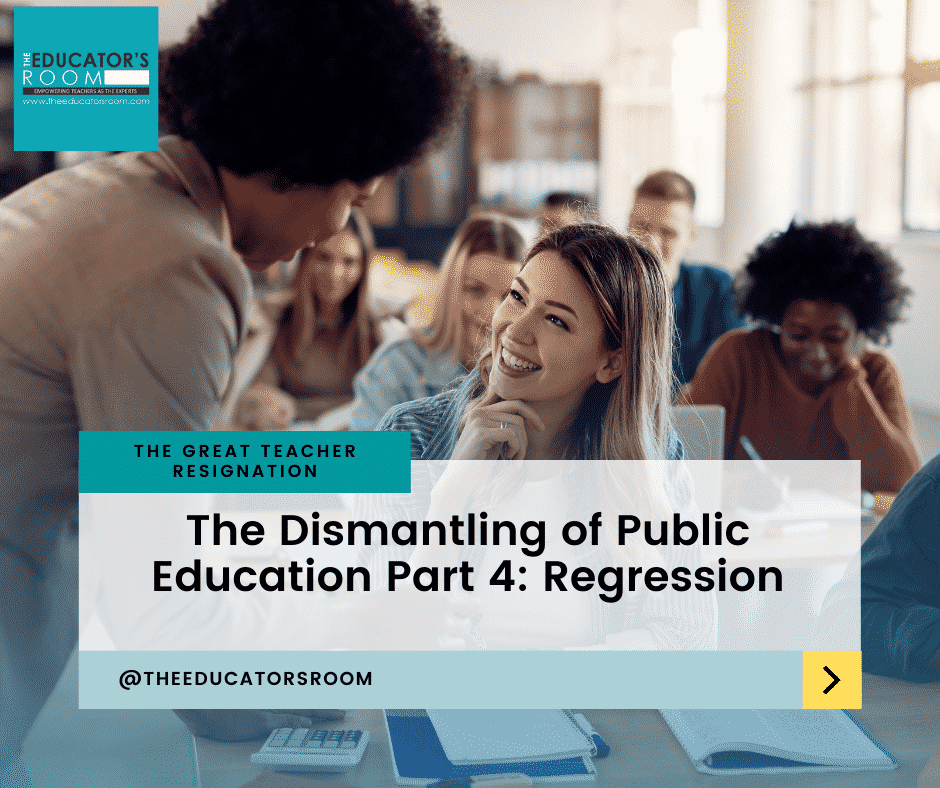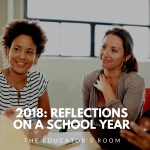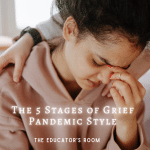Have you signed up for The Educator’s Room Daily Newsletter? Click here and support independent journalism!
On May 25, 2020, George Floyd was murdered in the street by Officer Derek Chauvin. This event (and the murder of Ahmaud Arbery) ultimately led to widespread protests around racial justice in America. For educators, this signaled the need for another change. Suddenly, the practices reserved for the “radical” teachers had become mainstream, and everyone was climbing aboard the bandwagon.
For many educators, the summer of 2020 was a time of professional growth. For a long time, teachers in specific school environments had only practiced things like culturally responsive teaching. With all the racial unrest, coupled with the raging pandemic keeping everyone at home, it was the perfect storm to shake things up in education. Across social media, questions like “how are you supporting your black students?” were being asked – and for some educators, it was the first time that they had thought about it.
Many districts hired professionals to give unconscious bias training, provided anti-racism materials, started book clubs around So You Want to Talk About Race, and tried to provide “decolonized” curriculum materials for the first time. Black voices in education were being called upon and amplified more than ever before, and it was long overdue.
It seemed that education was getting the correction it needed. People talked about staff diversity, finally understanding the difference between equality and equity, and having these important conversations! What we didn’t know at the time was that there would be a massive over-correction in the opposite direction soon. In the fall of 2020, Donald Trump said in a debate that he directed all federal agencies to halt anti-bias training (that was rooted in Critical Race Theory) because he felt the training was racist. That attack on critical race theory (CRT) would shift to public schools in the coming months.
There have been countless conversations, debates, articles, and legislation about CRT in schools for the last year. Even though there is still no evidence that CRT has been taught in a K-12 public school setting, this continues to garner attention. Additionally, there is no evidence any of the people making these laws or accusations truly understand what CRT is.
In recent weeks, certain politicians have become more hostile toward teachers in their crusade to stamp out CRT, including in states like Arizona that want teachers to post every single resource they will use in their class for the upcoming year to be vetted by parents. Perhaps most troubling is the increasing popularity of the idea that CRT is simply a catch-all for anything related to POC in the education setting. For example, in the last year, 35 states have proposed some kind of legislation to limit schools around topics like race and American history, sexual orientation, and politics.
Critical Race Theory has been co-opted to mean anything that celebrates (or acknowledges) non-white people or culture or doesn’t align with the views of right-wing politicians pushing this legislation. An extension of this anxiety over race and education has shown itself in the recent book banning trend.
Books ranging from classics to teen romance are being banned from schools and libraries across the country. It is evident to those paying attention: the books being banned are by women, non-white, non-straight individuals and often explore the nuances of their experiences. There is nothing nefarious about the books, just those trying to ban them.
Perhaps most ironic is the fact that all of this anti-intellectual, anti-critical thinking legislation (because, let’s call it what it is) does not apply to charter or private schools. Back in part three of this series, I explained the difference in the regulation of public vs. private and charter schools: these new laws have been written to only apply to public schools.
Public schools, by the way, prescribe to state and federal curriculum 100% of the time. Private schools do not have to follow any government curriculum, and many states allow charters freedom to develop their own. Furthermore, religious organizations can fund charter schools, and some have been found teaching religious doctrine to students. Despite this, the anti-indoctrination politicians have never been against that kind of teaching. It is undeniable that the ultimate goal here is: demonize and delegitimize public education.
With all the challenges that Covid-19 has brought us, unfortunately, it created the perfect storm to damage our public education system. Over the years, we have ignored the calls for reform from teachers surrounding pay structures, class sizes, autonomy, and accountability. Now, we are facing a mass teacher shortage that will only grow in intensity over the coming months. While “school choice” has been around for decades, its proponents are opportunistic during this unstable time for public education. They are capitalizing on societal anxiety around public school legitimacy and indoctrination.
There is no doubt in my mind that the foundation has been laid for public education to topple if we continue on this course. I acknowledge wholeheartedly that our current system is not perfect: funding structures need to be overhauled, segregation ripple effects are still felt today, plus numerous other reforms need to be addressed. But this other alternative would exacerbate inequities and create a wider divide between the privileged and disadvantaged students. Horace Mann had it right: education should be free, democratic, accessible, high-quality, and for all students.






